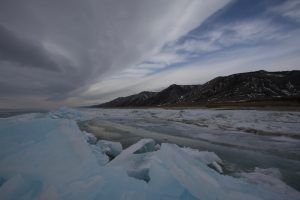Lake Baikal: Siberia’s Frozen Jewel

Japan’s FSA Defends Approach After Coincheck Fraud
19 February, 2018
Katong: The Funky Singapore District at the Sweet Spot of Gentrification
1 March, 2018www.travelwrighter.com, March 2018
Read the whole article here
Alexei the driver puts the jeep onto the ice at a fair old clip and hits the accelerator. As we pass 70 kilometres an hour, markers on the ice road flying by to either side, our guide chimes in from the back seat. “Take your seatbelt off!” she says with a broad smile. Take your seatbelt off? “It is for safety,” she explains.
Everything is a bit different at Lake Baikal. It is a place of superlatives and records. It is one of the oldest geological features on Earth, perhaps 70 million years old. It is the deepest lake on the planet, more than a mile down at one point. It holds one fifth of the unfrozen fresh water in the world, more than the five Great Lakes combined. Its 632km length is London to Paris and all the way back again. And its water is of such extraordinary purity and clarity that one can see as far as 40 metres in it: swimmers and divers have reported vertigo, so far down can they see.
But I won’t be swimming on this trip: I’ve chosen March to come and it is still frozen a metre thick, which is why our jeep can cover anywhere on its entire surface area – equivalent to that of Belgium – without alarm, and why on the official ice road leading to Olkhon Island on the western side, trucks and oil tankers can safely drive over it. One winter, many years ago before the Trans-Siberian took its current route and when the ice was too thick for icebreakers to clear a path for a ferry, a railway was built on the ice. When it freezes, it really freezes.

